Imagine a plant that doesn’t just sit pretty in a pot—it actively hunts! Carnivorous plants have evolved to trap and digest insects, thriving in nutrient-poor soils where other plants struggle. Whether you’re a seasoned plant enthusiast or just curious, this list will introduce you to 25 fascinating carnivorous plants from five different categories: Venus Flytraps, Pitcher Plants, Sundews, Bladderworts, and Butterworts. Let’s dive into their world!
Contents
Venus Flytraps (Dionaea muscipula)
These famous plants snap shut when their tiny hairs are triggered. They require bright light and moist soil to thrive.
Classic Venus Flytrap
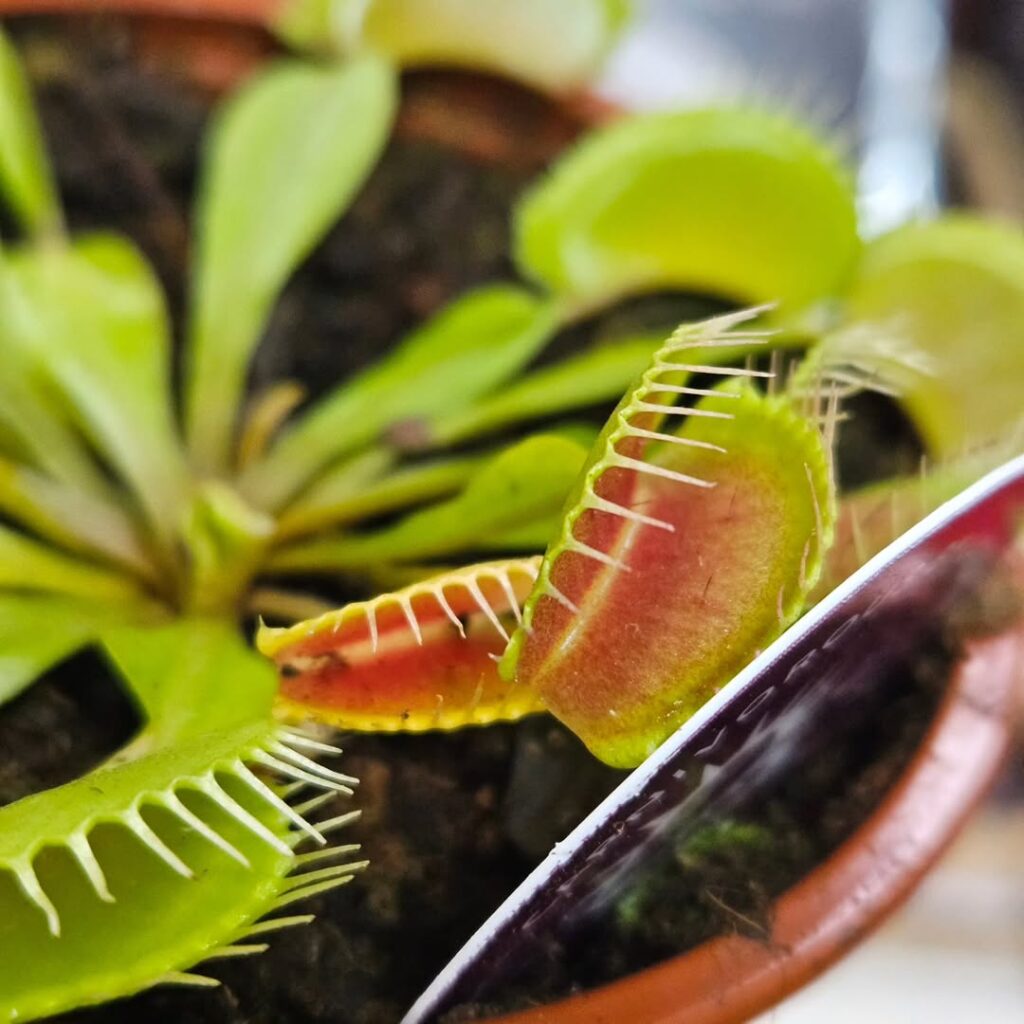
The Classic Venus Flytrap is the most recognizable carnivorous plant, with its green leaves and red-trimmed traps. It uses rapid movement to close its lobes when an insect brushes against its sensitive hairs twice. Once trapped, the plant secretes digestive enzymes to break down its prey over several days.
Red Dragon Venus Flytrap
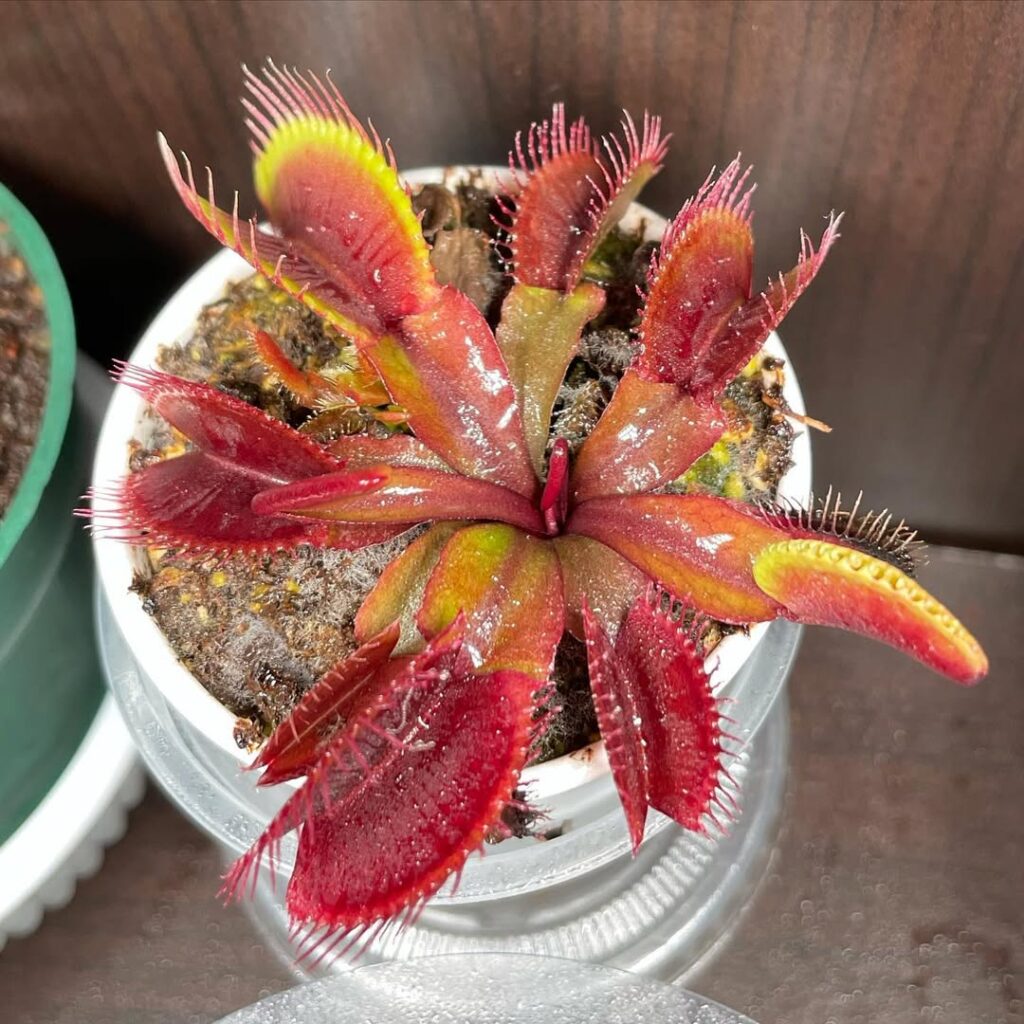
This stunning variety boasts deep red coloration, making it one of the most visually striking flytraps. It thrives in bright light, which intensifies its red hues. Like all Venus flytraps, it relies on snap-trap mechanics to capture and digest insects efficiently.
Sawtooth Venus Flytrap

The Sawtooth Venus Flytrap has jagged, serrated trap edges that give it an aggressive, spiky appearance. Unlike the classic variety, its lobes close slightly faster, ensuring prey cannot escape. It remains a favorite among carnivorous plant enthusiasts due to its unique structure and effectiveness in trapping insects.
King Henry Venus Flytrap
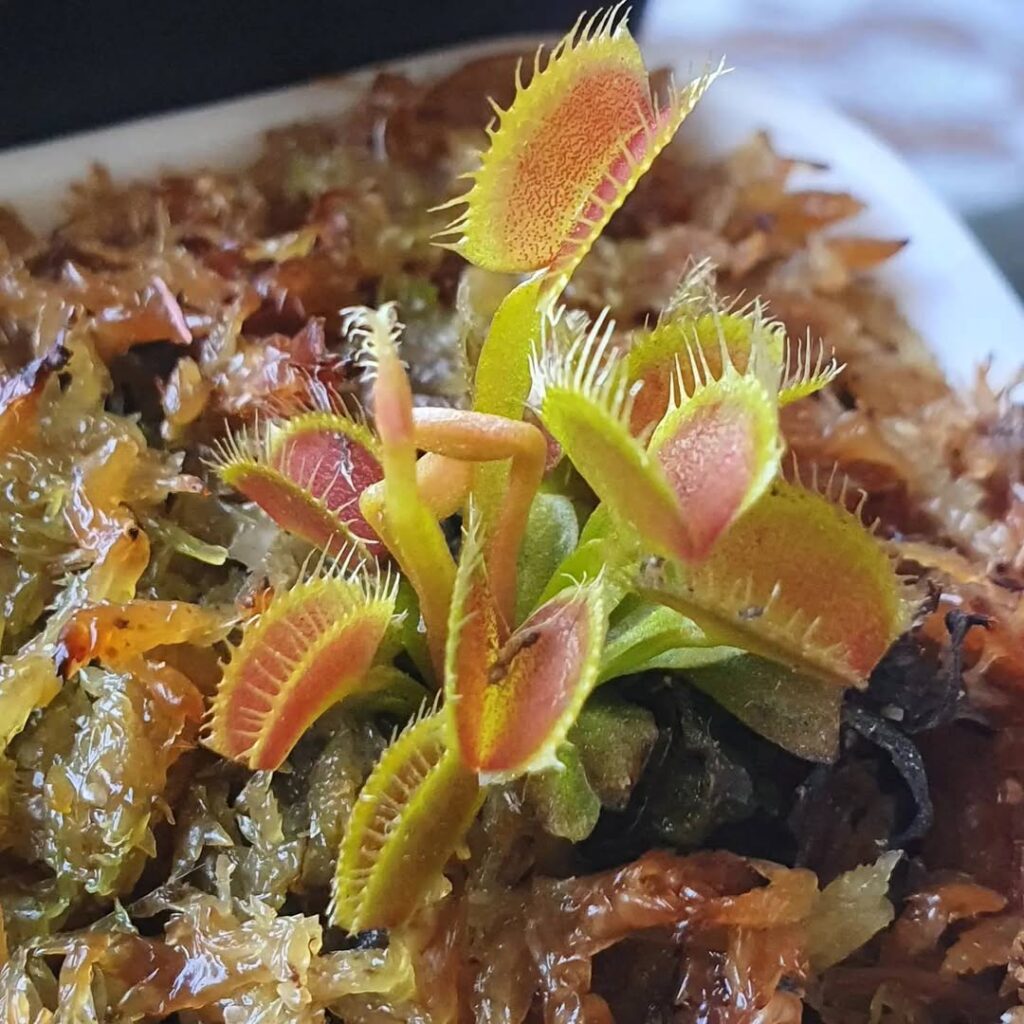
This is one of the largest Venus flytrap cultivars, capable of producing oversized traps that tower over other varieties. Its impressive growth rate makes it ideal for collectors looking for something robust and striking. Thanks to its sheer size, King Henry can trap bigger prey than most flytraps.
B52 Venus Flytrap
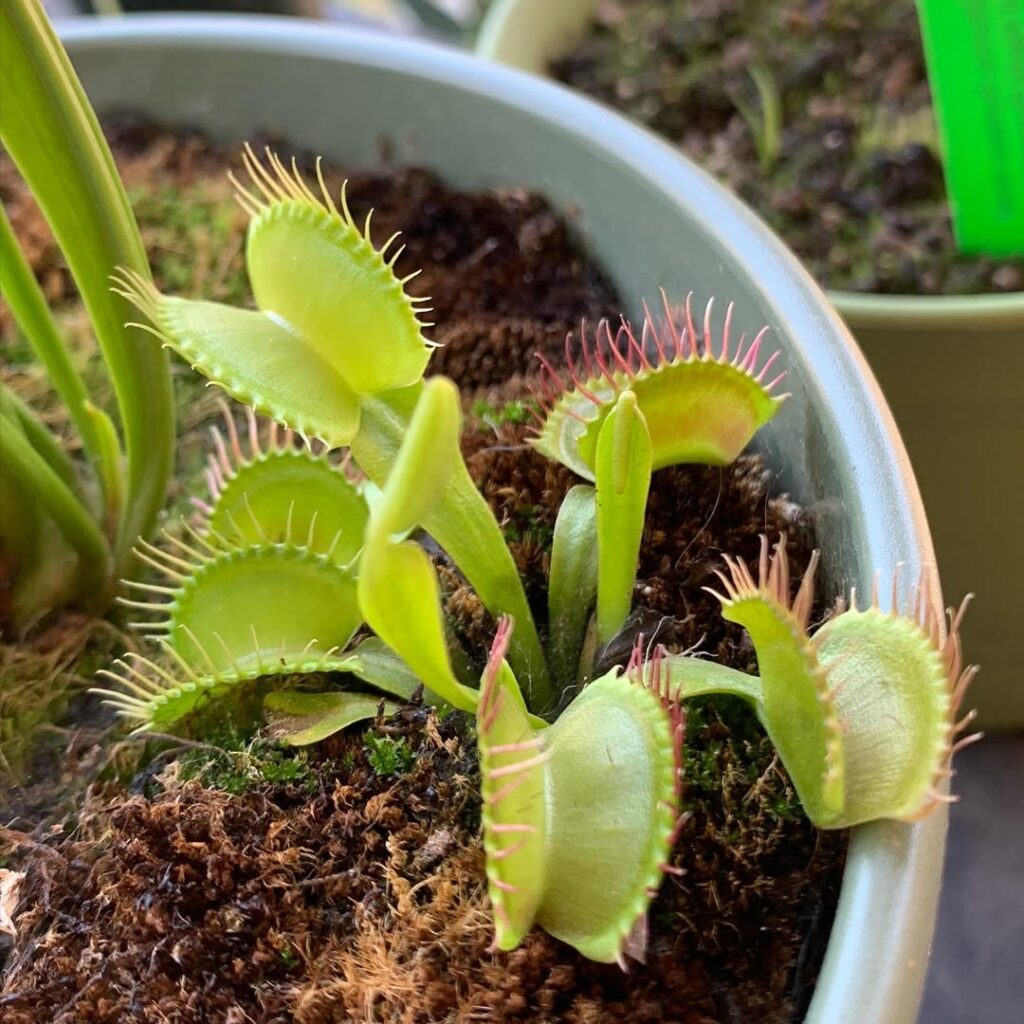
Known for its massive traps, the B52 cultivar is one of the most sought-after Venus flytraps among collectors. It produces wide, deeply colored lobes that snap shut with incredible force, making it one of the most effective insect hunters. With proper care and bright light, its traps can grow up to 2 inches across, making it a true standout.
Pitcher Plants (Nepenthes & Sarracenia)
These plants trap prey inside deep, tube-shaped leaves filled with digestive fluids.
Purple Pitcher Plant (Sarracenia purpurea)
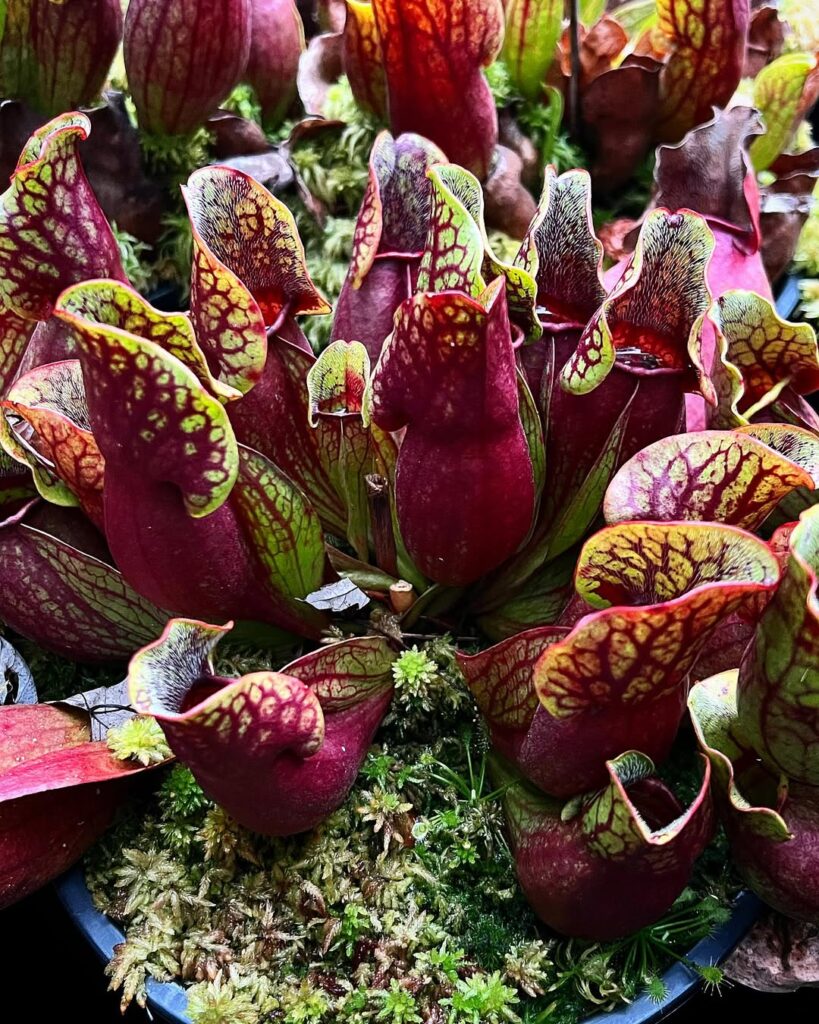
The Purple Pitcher Plant is known for its red-tinged, bulbous pitchers that fill with rainwater. Unlike tropical pitcher plants, it relies on bacteria within the fluid to help digest its captured insects. This North American species is hardy and well-suited for outdoor cultivation in temperate regions.
White-Topped Pitcher Plant (Sarracenia leucophylla)
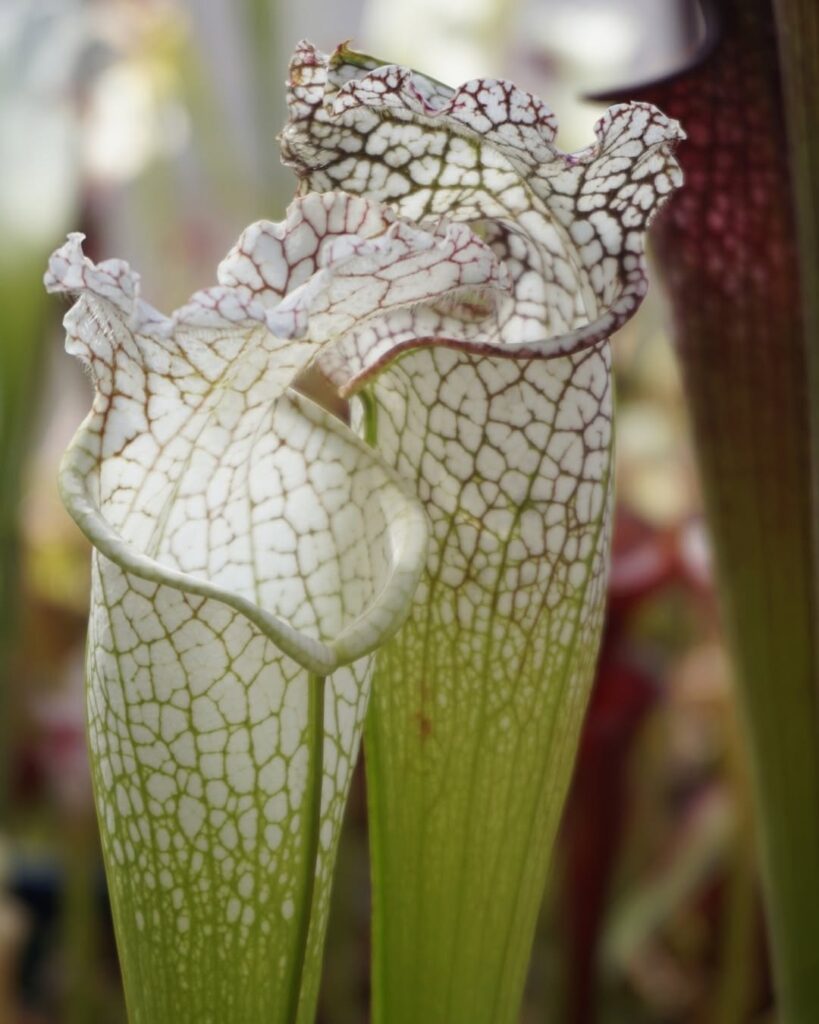
This elegant plant features white-speckled pitcher tops with deep green bases, making it one of the most visually appealing species. The contrast between its white upper section and red veins enhances its insect-attracting ability. It thrives in wet, sunny conditions and can grow quite tall.
Monkey Cup (Nepenthes rajah)
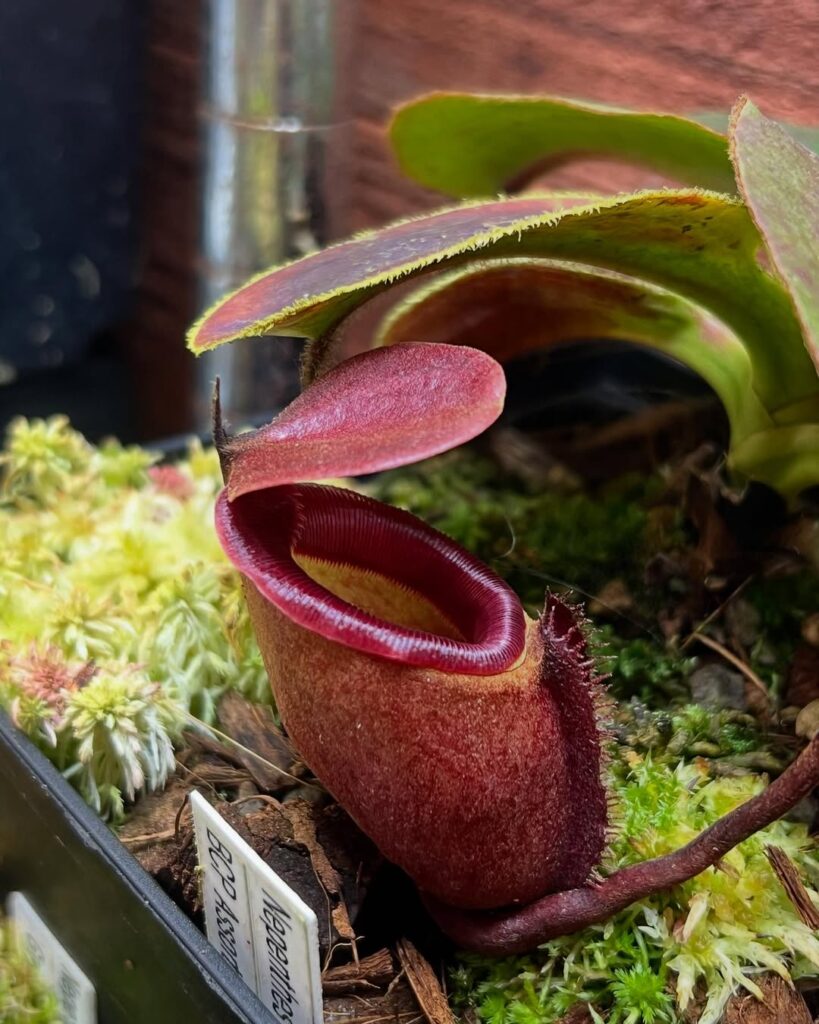
The Monkey Cup is famous for producing some of the largest pitcher traps in the world, capable of holding small animals like rodents! Found in Borneo, its massive cups contain slippery walls and digestive fluids that make escape impossible for prey. It is best suited for terrariums due to its need for high humidity.
Cobra Lily (Darlingtonia californica)
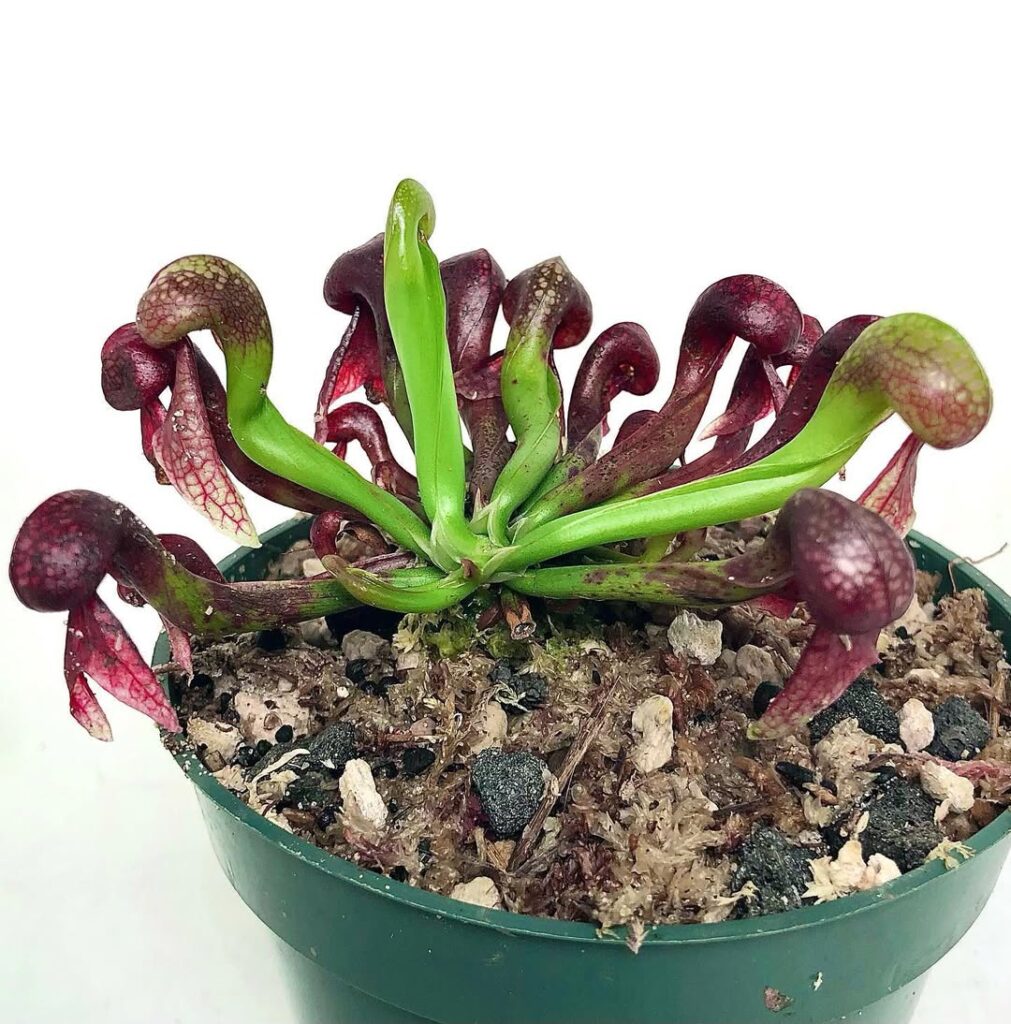
This unusual pitcher plant resembles a rearing cobra, with a curved, hooded top and downward-facing entrance. Unlike other pitcher plants, it doesn’t use passive digestion but instead creates an intricate maze inside its hollow tube, confusing prey. It prefers cool conditions and thrives in wet environments.
Red Nepenthes (Nepenthes ventricosa)
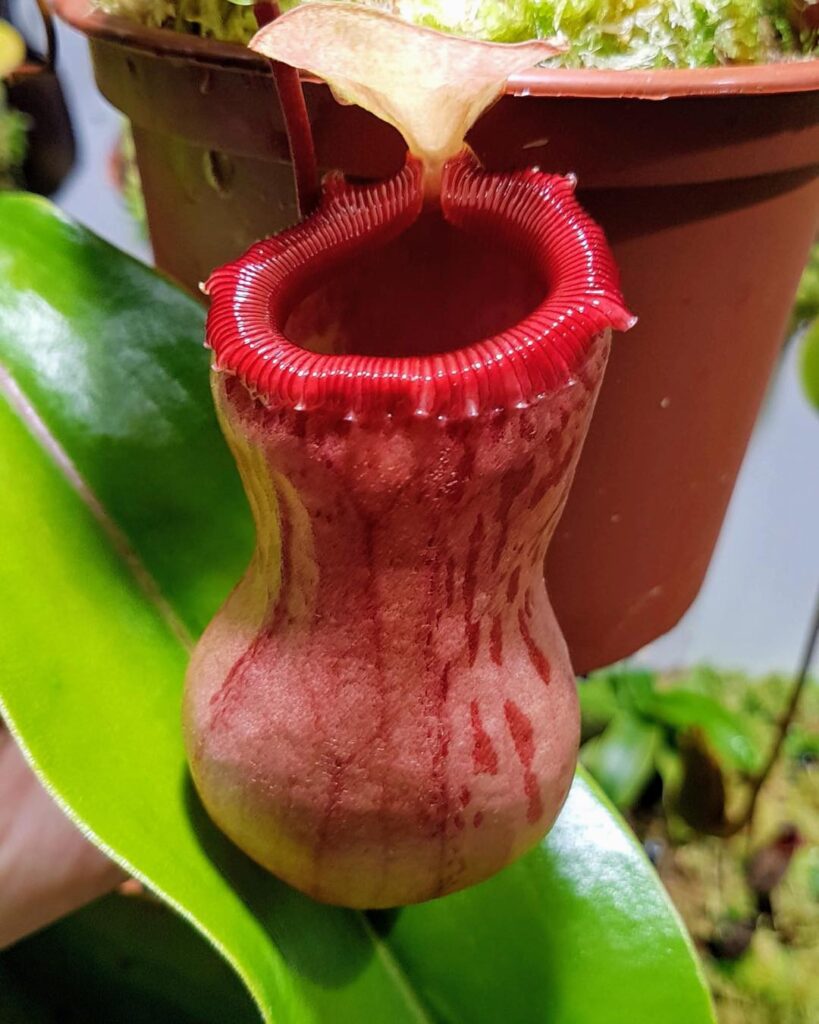
This vibrant red-colored pitcher plant is both striking and effective at trapping insects. Its tube-like structure contains nectar-laced rims that attract prey, leading them into its deep cavity where digestion occurs. It thrives in tropical conditions with bright, indirect light.
Sundews (Drosera)
Covered in sticky tentacles, sundews lure insects and slowly digest them.
Cape Sundew (Drosera capensis)
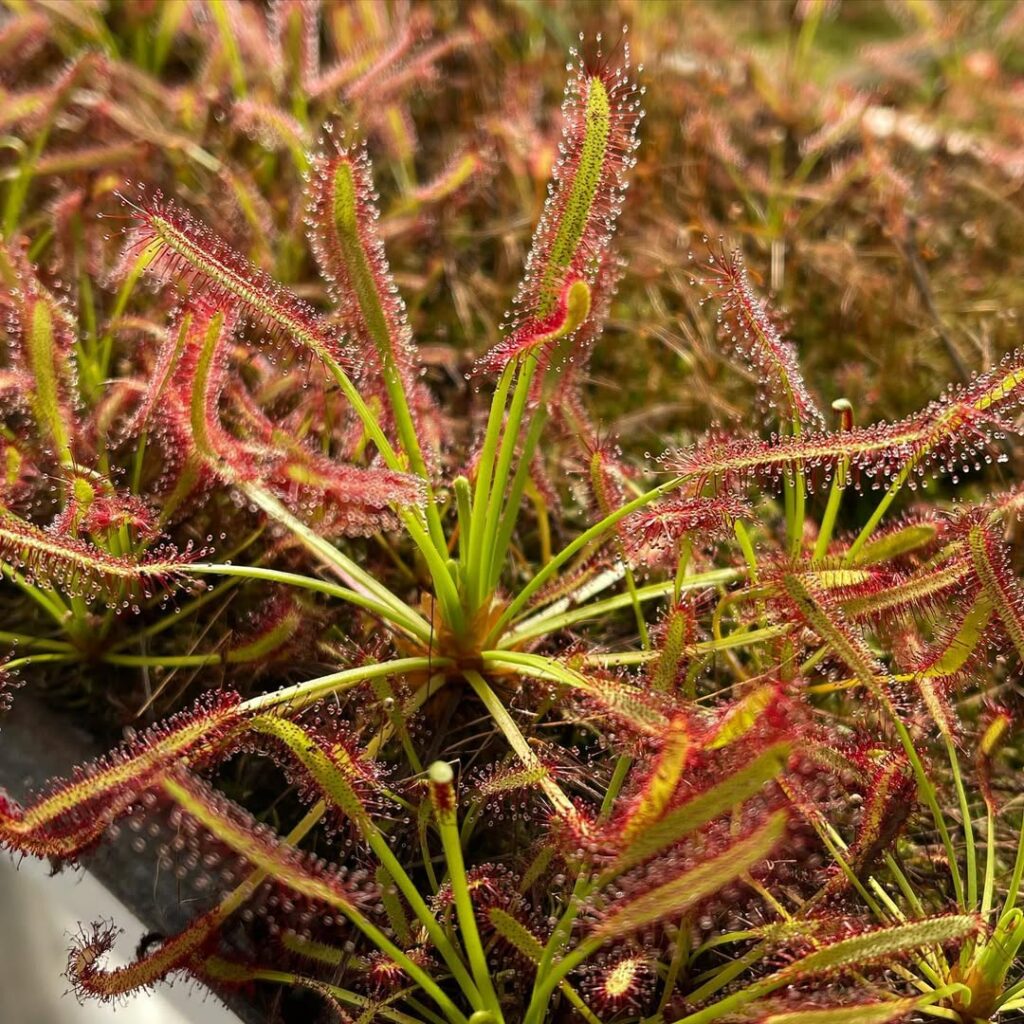
One of the easiest sundews to grow, Cape Sundew has elongated, curling tentacles covered in glistening droplets of sticky mucilage. When an insect lands, the tentacles slowly wrap around it, ensuring digestion occurs. This species thrives in warm, humid environments.
Forked Sundew (Drosera binata)
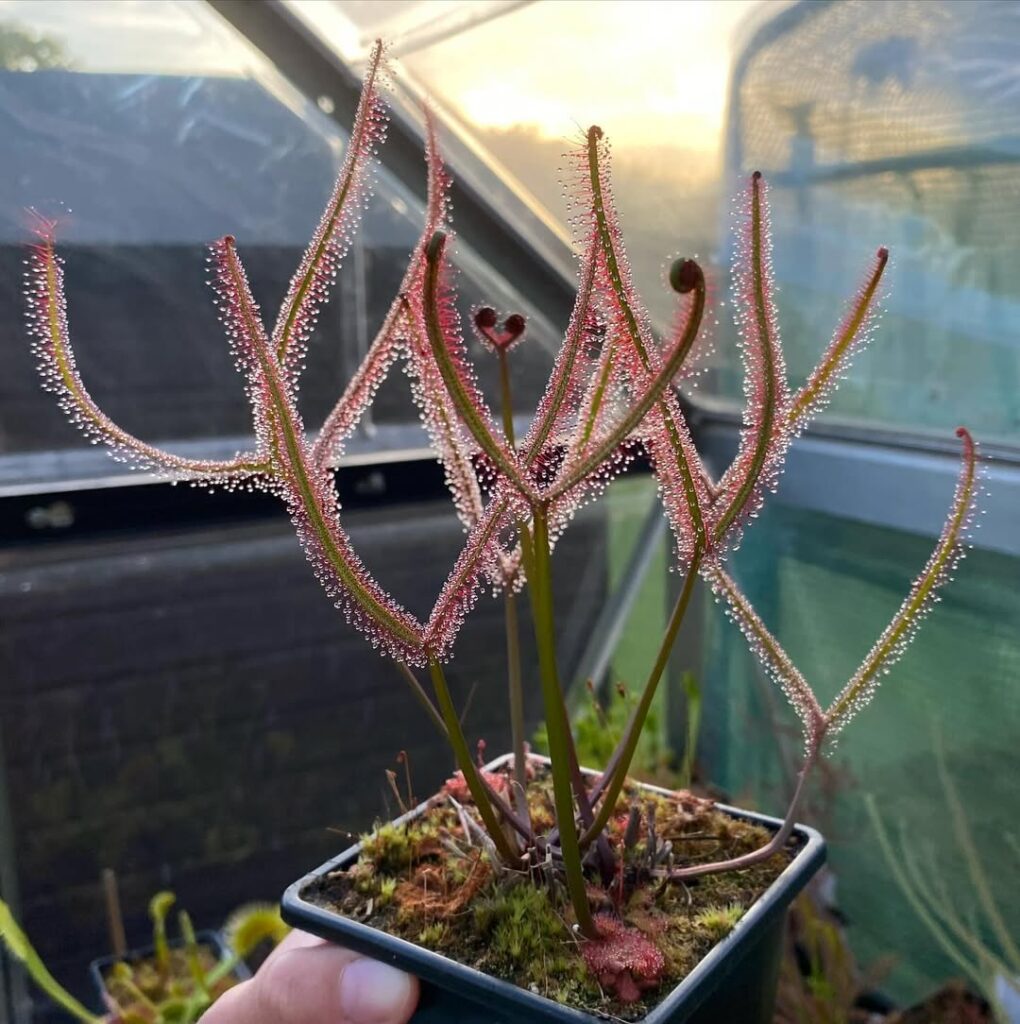
With Y-shaped leaves, the Forked Sundew produces multiple branching tentacles capable of capturing multiple insects at once. The plant responds to touch by curling inward, ensuring its prey is securely ensnared. It does well in bright, humid conditions.
Alice Sundew (Drosera aliciae)
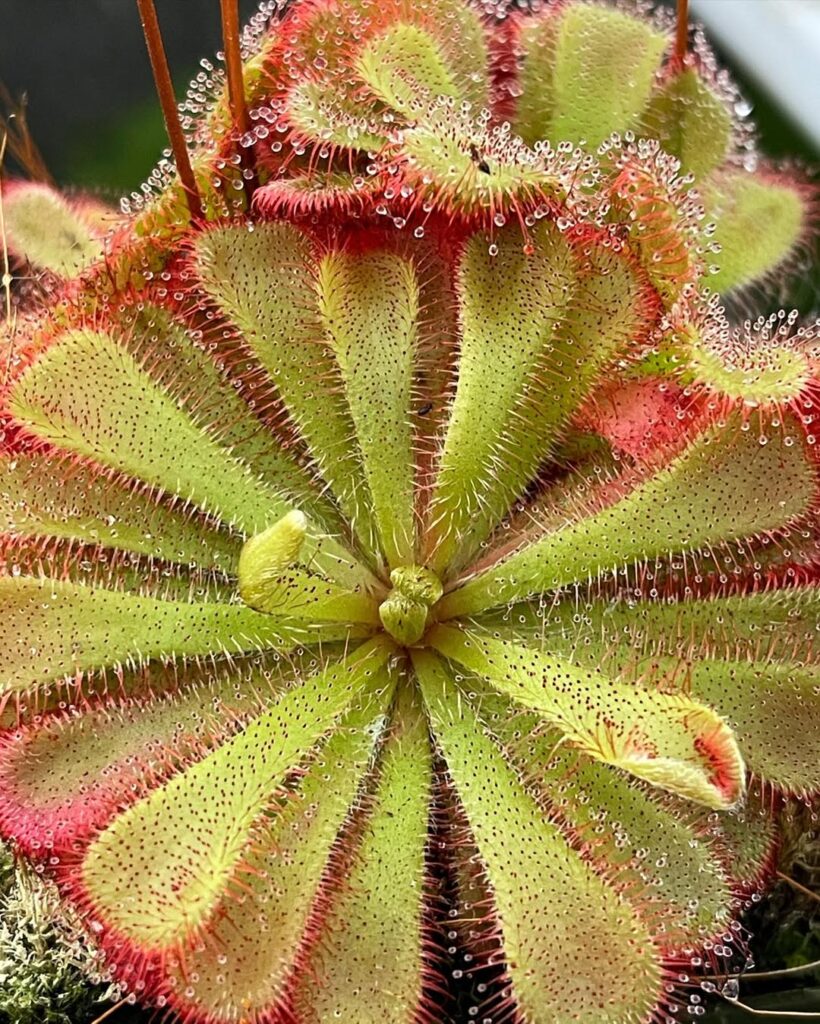
This compact sundew is perfect for small spaces, featuring rounded leaves densely packed with sticky traps. Despite its small size, it effectively captures gnats and fruit flies. It’s easy to maintain, making it a great starter carnivorous plant.
Giant Sundew (Drosera regia)
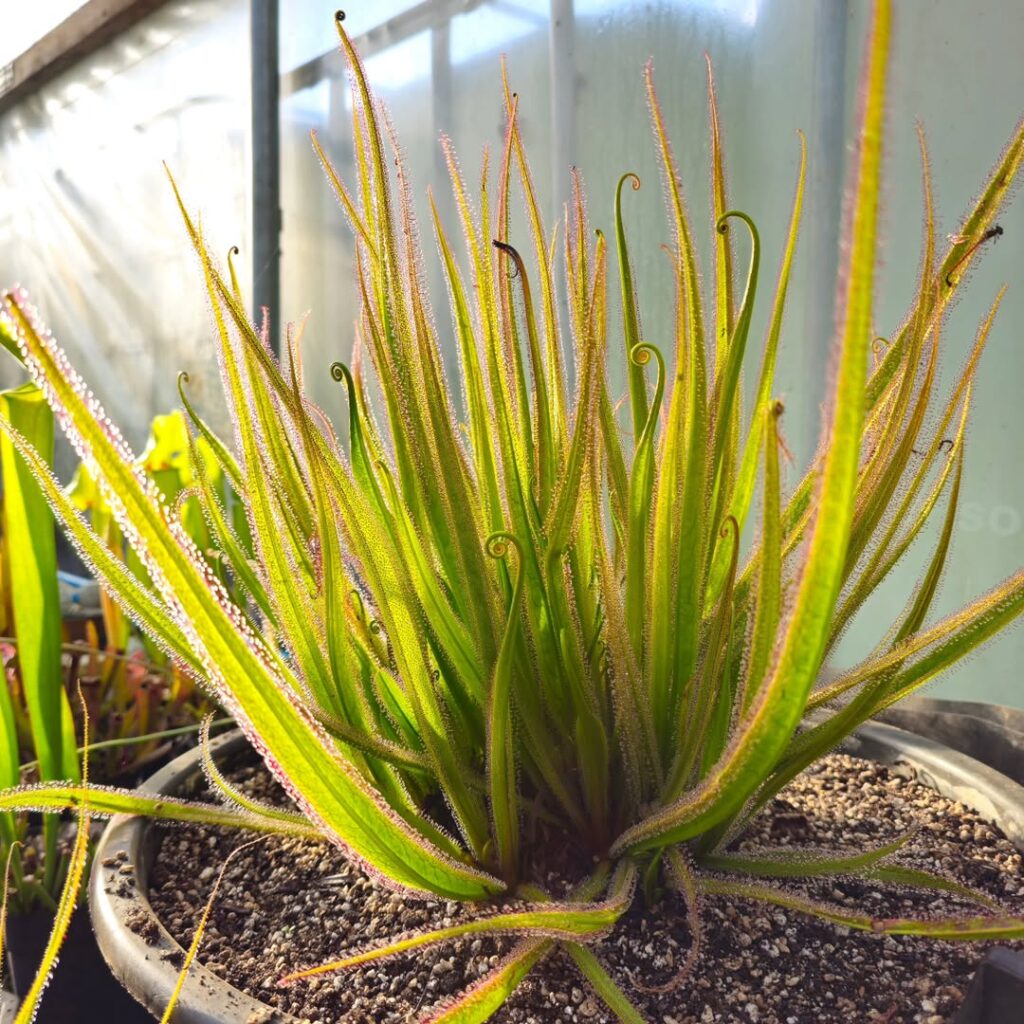
The largest sundew species, it features long, thick leaves covered in sticky tentacles. It actively folds around larger prey, making it an aggressive hunter. Unlike most sundews, it requires slightly more nutrients, meaning occasional feeding may be necessary.
Round-Leaved Sundew (Drosera rotundifolia)
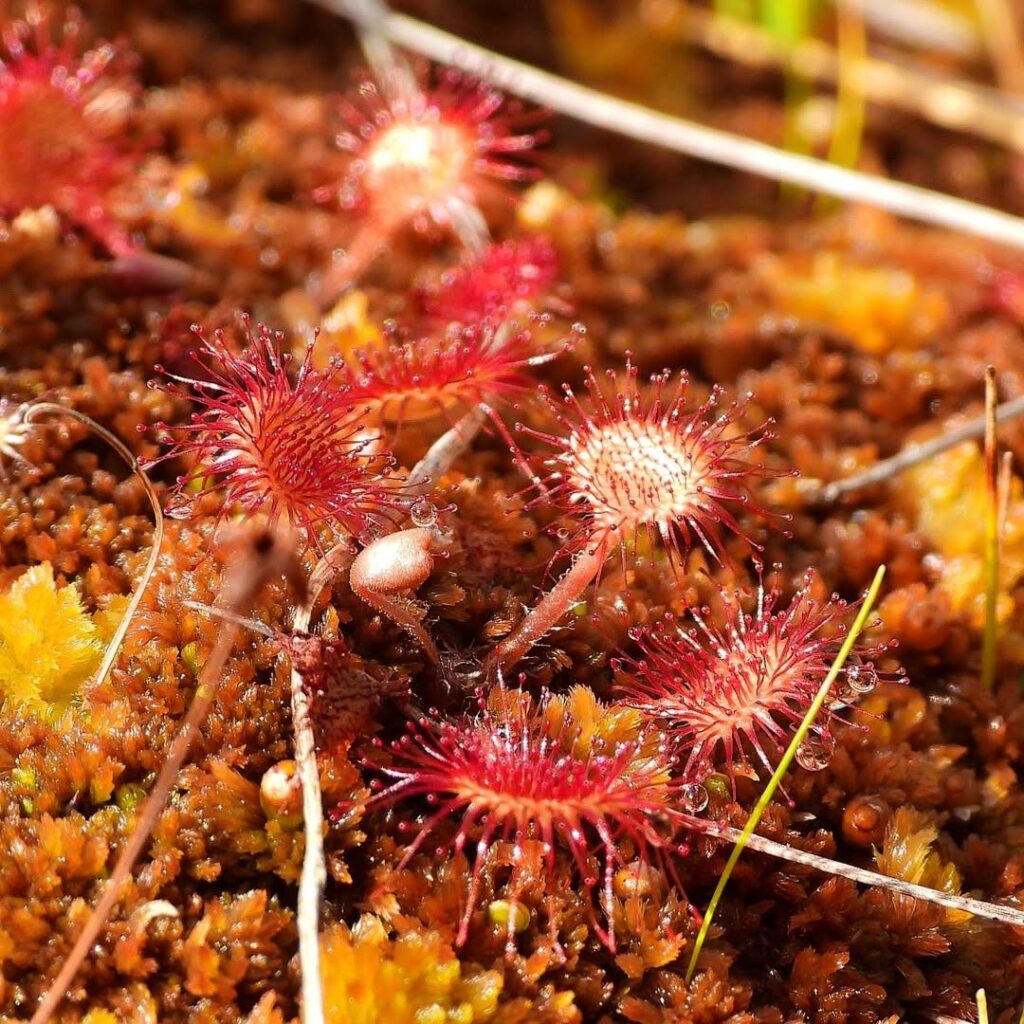
This tiny but mighty sundew is found in bogs and wetlands. Its circular leaves feature gland-covered tentacles that glisten in the sun, luring insects toward their sticky doom. It’s an excellent addition to terrariums.
Bladderworts (Utricularia)
These aquatic hunters use tiny vacuum-like traps to suck in prey within milliseconds.
Common Bladderwort (Utricularia vulgaris)
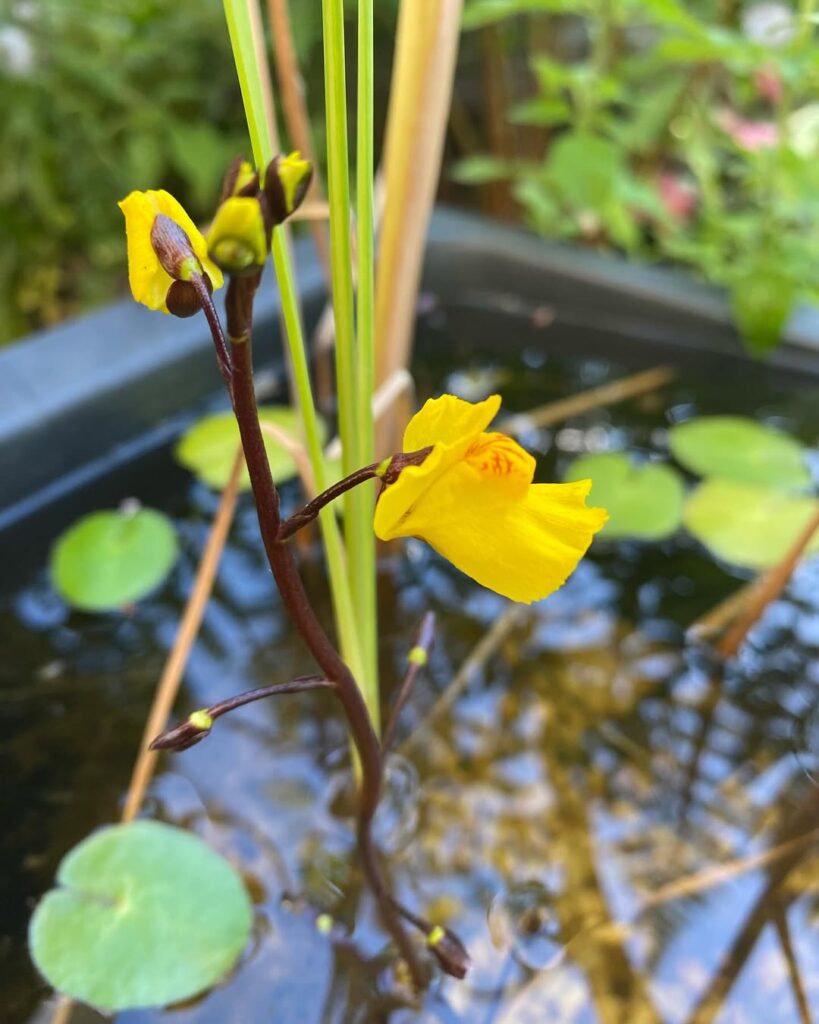
This floating aquatic plant thrives in ponds and wetlands. It lacks true roots and absorbs nutrients directly from the water. Its tiny bladder traps remain hidden beneath the surface, waiting for unsuspecting prey like mosquito larvae to trigger their trap doors.
Purple Bladderwort (Utricularia purpurea)
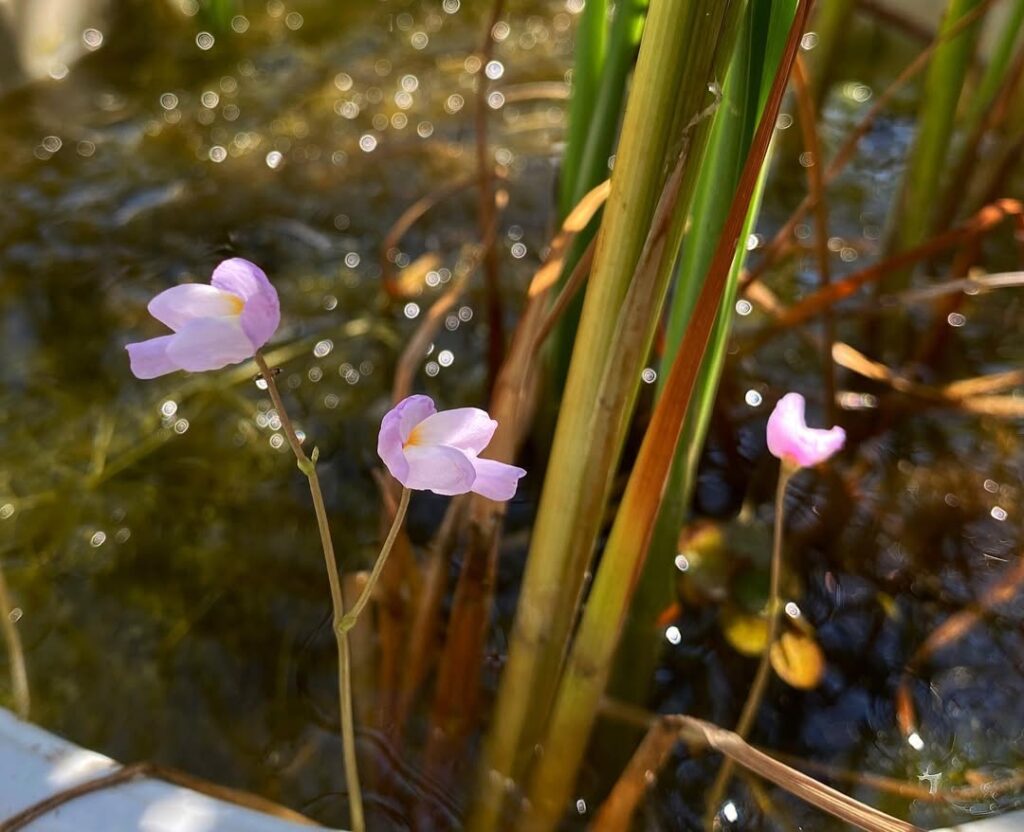
The Purple Bladderwort is as beautiful as it is deadly, producing delicate violet blooms while silently hunting underwater. Instead of actively trapping prey like other bladderworts, it forms mutualistic relationships with microorganisms that help break down organic matter inside its bladders.
Large Bladderwort (Utricularia inflata)
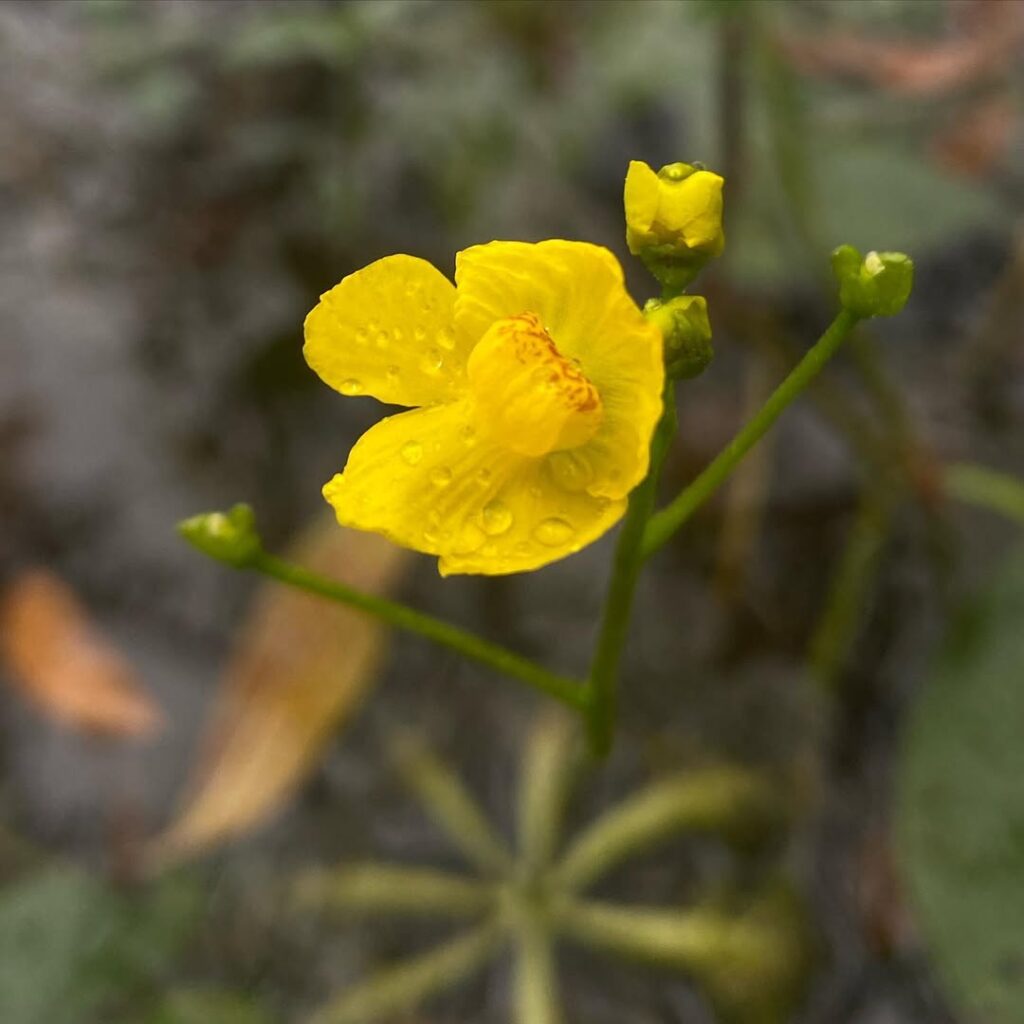
Unlike smaller bladderworts, this species has wide floating leaves that form a circular raft on the water’s surface. The submerged bladders are highly effective at capturing tiny aquatic creatures, making this species an important player in freshwater ecosystems.
Brazilian Bladderwort (Utricularia reniformis)
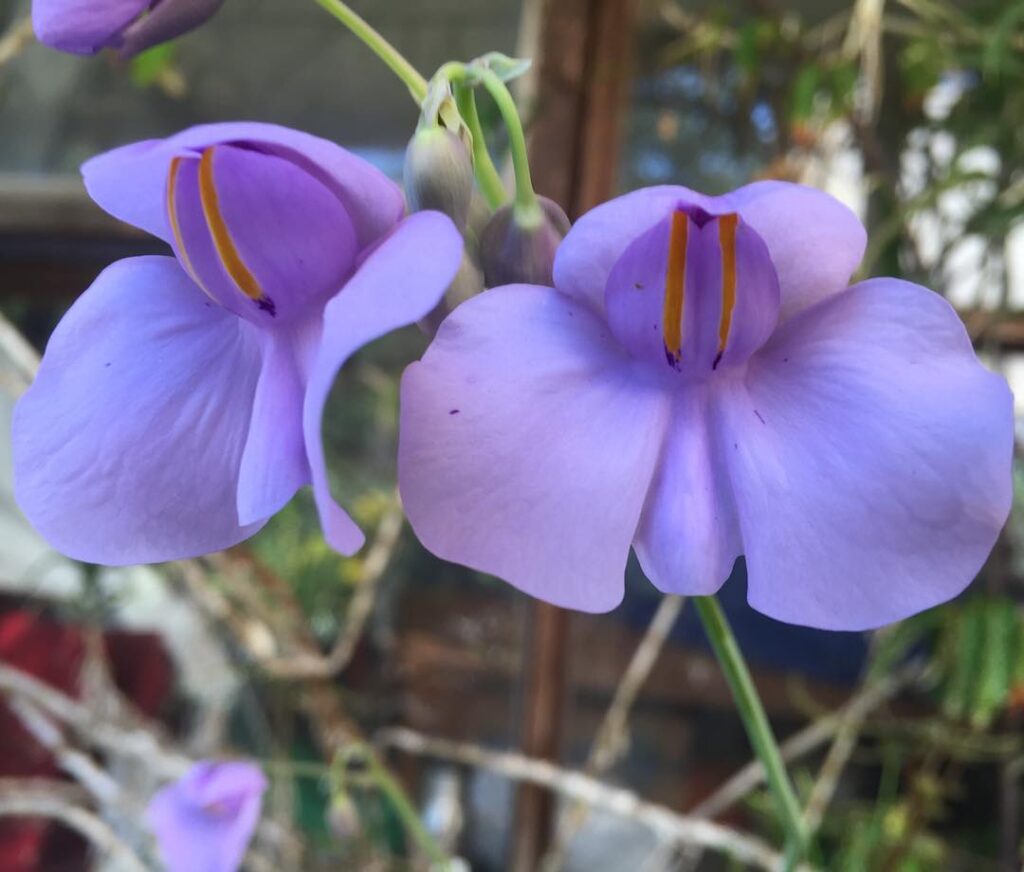
This rare species features large, kidney-shaped leaves, making it visually distinct from other bladderworts. While most bladderworts focus on small prey, U. reniformis produces oversized bladders that help it consume larger aquatic invertebrates.
Humped Bladderwort (Utricularia gibba)
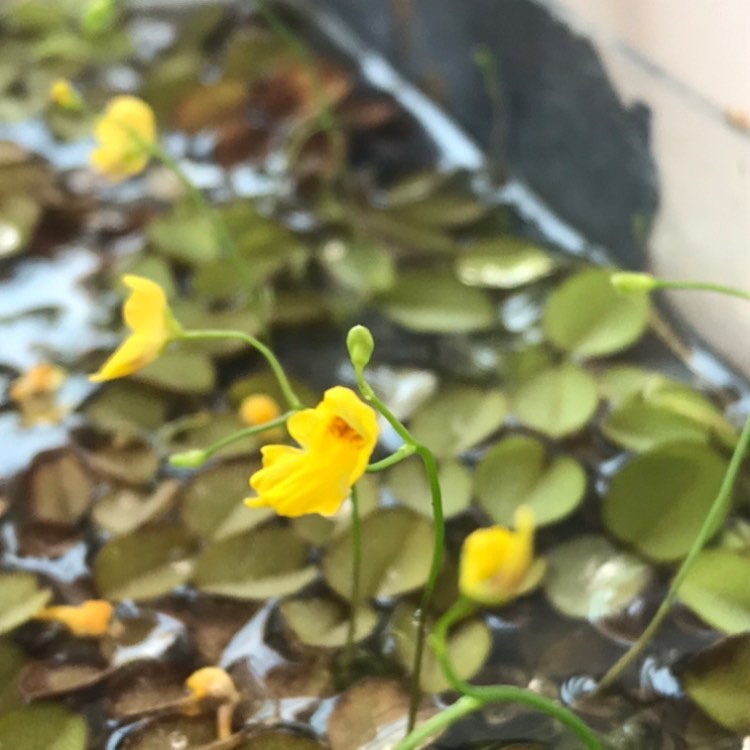
This tiny but powerful plant has some of the fastest traps in the plant kingdom. Its minuscule bladders snap shut within less than a millisecond, creating an internal vacuum that sucks in unsuspecting microorganisms. Despite its size, it plays a major role in controlling algae and microscopic life in freshwater environments.
Butterworts (Pinguicula)
These plants trap insects on their sticky leaves before slowly digesting them.
Mexican Butterwort (Pinguicula moranensis)
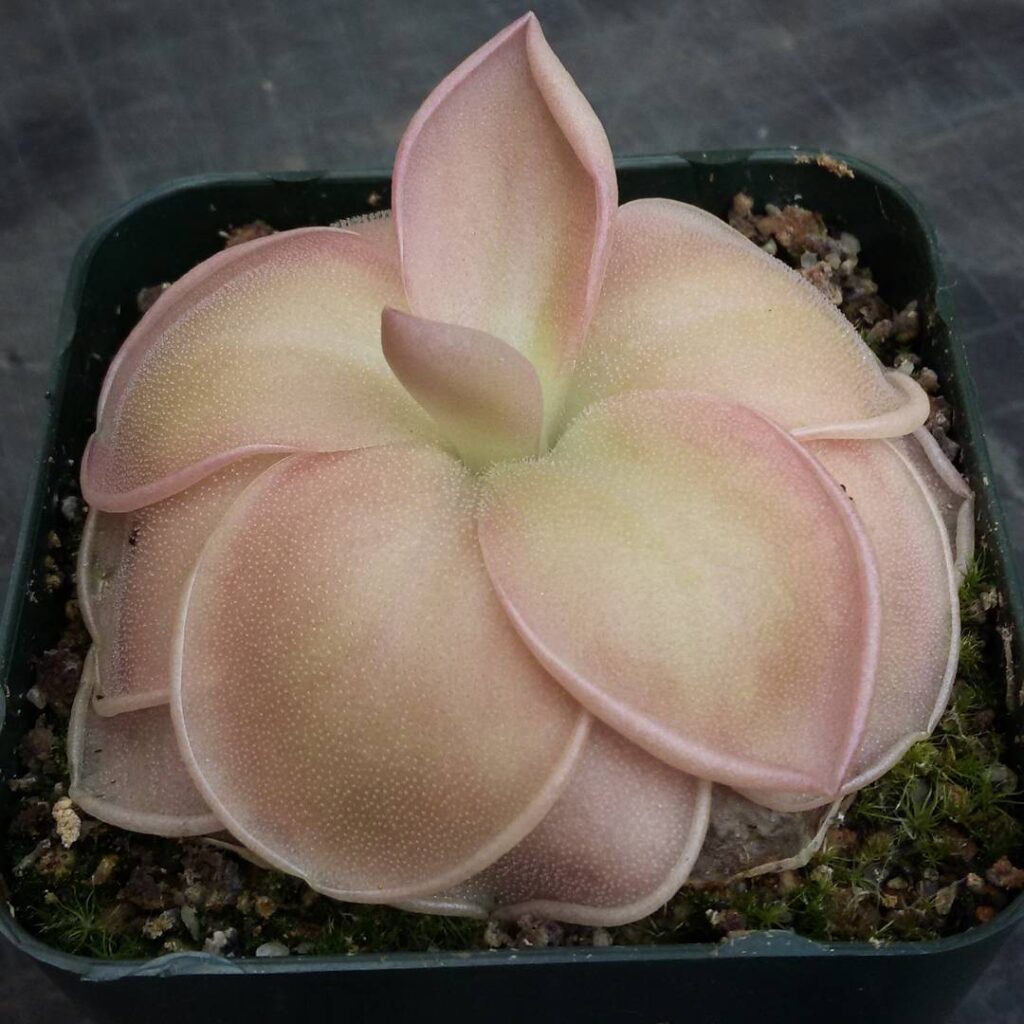
With bright green leaves that turn rosy pink under strong sunlight, this butterwort is a popular choice for indoor growers. It thrives in humid environments, catching tiny gnats and fruit flies that land on its slick, adhesive-covered surface.
Giant Butterwort (Pinguicula gigantea)
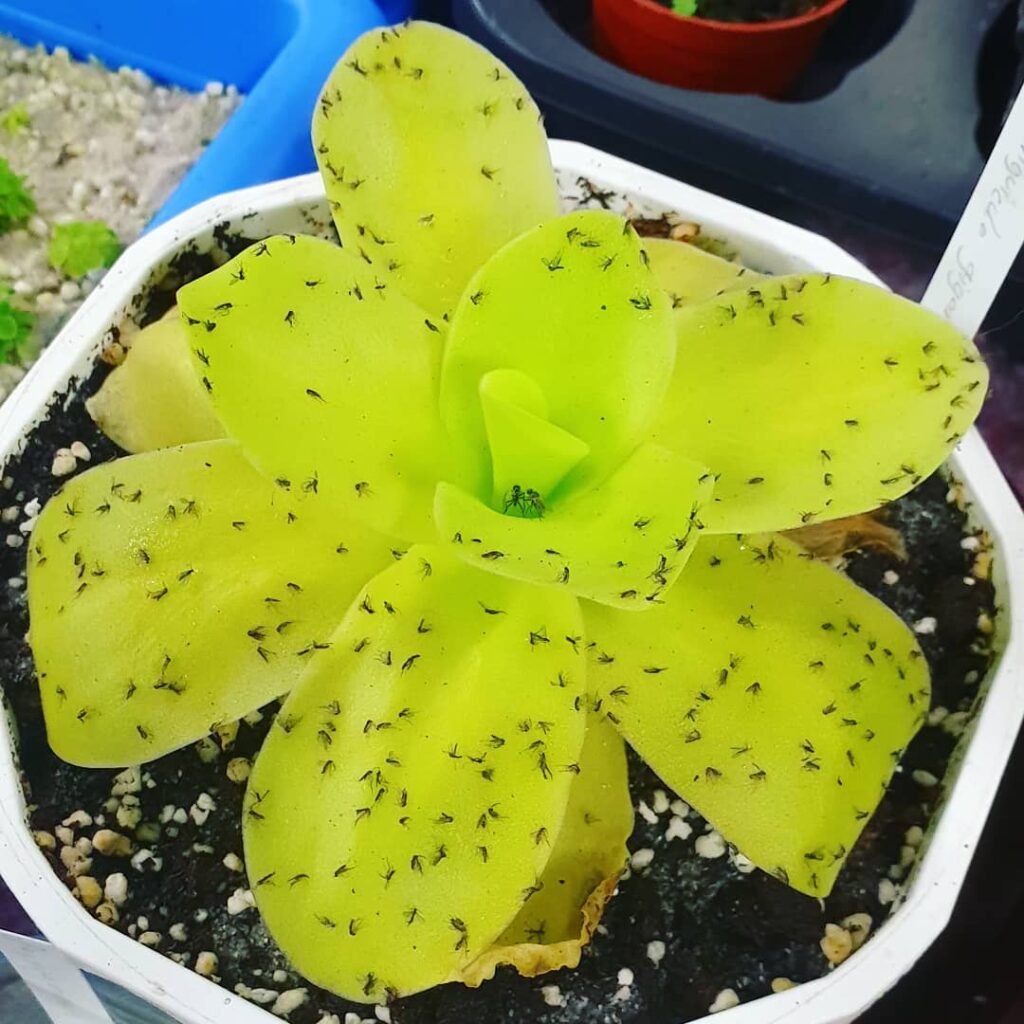
This species is larger than most butterworts, boasting broad, fleshy leaves that hold multiple prey at once. Unlike other carnivorous plants, P. gigantea doesn’t rely on active movement—it simply waits for insects to land before slowly digesting them over time.
Yellow Butterwort (Pinguicula lutea)

Native to the southeastern United States, the Yellow Butterwort produces delicate yellow flowers that contrast beautifully against its sticky leaves. It thrives in warm climates and is excellent at controlling small fly populations.
Red Butterwort (Pinguicula laueana)

One of the few red-leaved butterworts, this species boasts eye-catching foliage that stands out in any carnivorous plant collection. Its ability to trap tiny insects makes it a natural pest controller indoors or in greenhouse setups.
Alpine Butterwort (Pinguicula alpina)
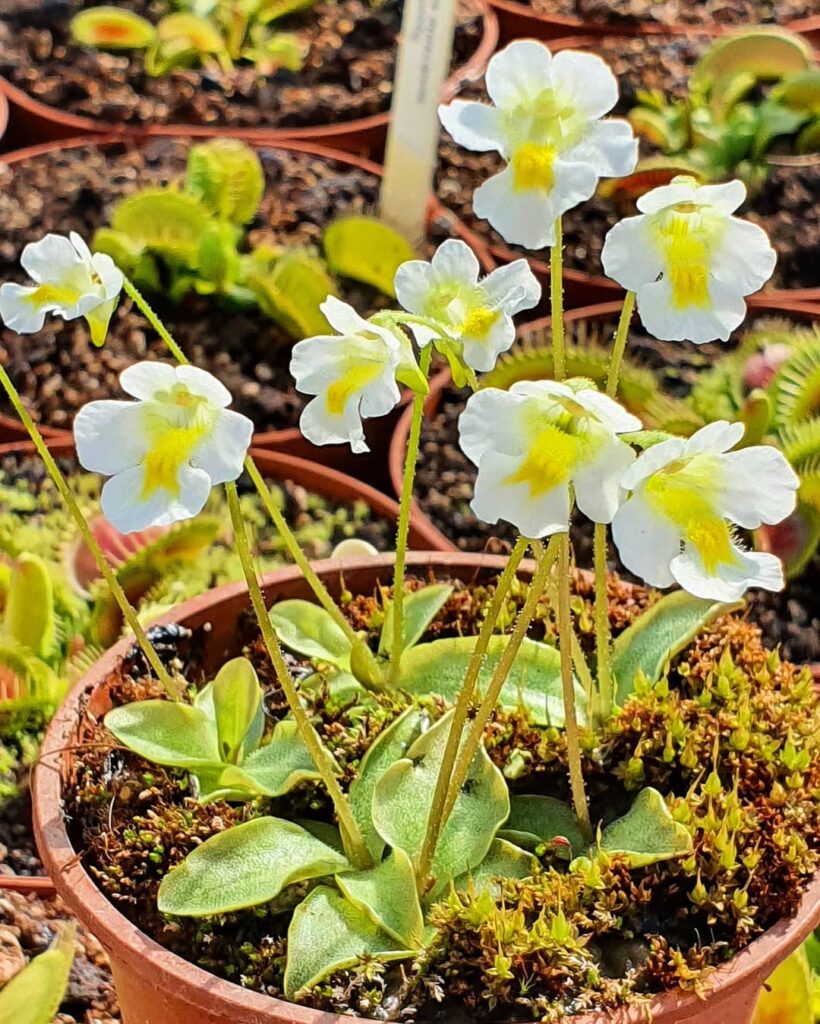
Unlike most butterworts, P. alpina prefers cooler climates and high-altitude conditions. It produces elegant white flowers and thrives in nutrient-poor soils, making it an adaptable species for temperate gardens.
Conclusion
Carnivorous plants aren’t just fascinating—they’re living predators that add drama to any indoor or outdoor space. Whether you prefer the quick snap of a Venus Flytrap, the elegant curves of a Pitcher Plant, or the delicate stickiness of a Butterwort, there’s something for every plant lover.
